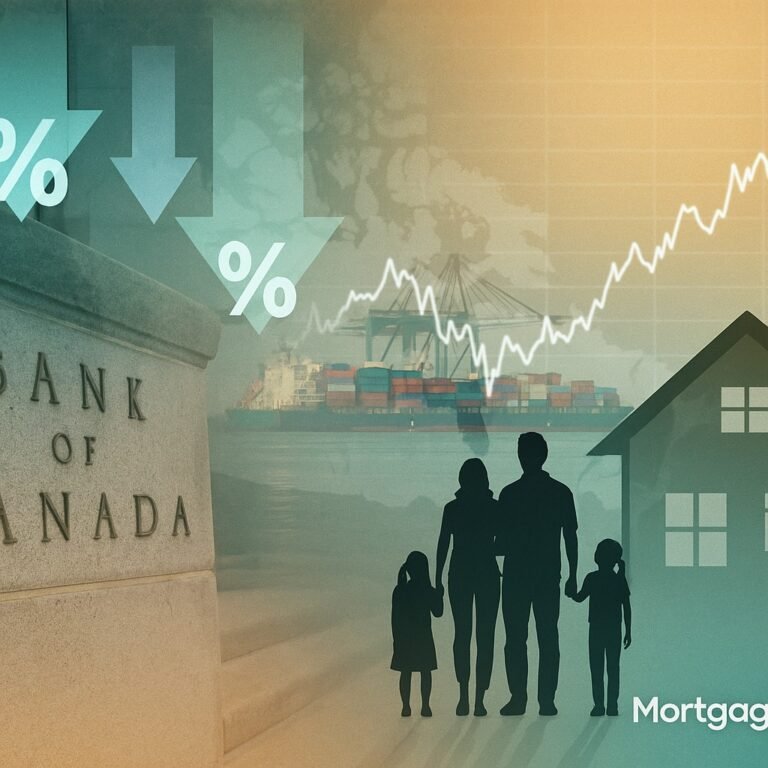
Housing Construction Stalls in Major Metro Areas, CMHC Warns
Canada’s housing pipeline hit a pause in H1 2025. CMHC data shows flat national housing starts, with Toronto and Vancouver leading the slowdown due to weaker condo launches, financing costs, and policy delays.
Canada’s housing pipeline is showing signs of stress. According to the Canada Mortgage and Housing Corporation (CMHC), the first half of 2025 saw flat national housing starts, with steep slowdowns concentrated in Toronto and Vancouver — two cities that have long defined the country’s affordability crisis.
While secondary metros like Calgary, Edmonton, Montréal, Ottawa, and Halifax maintained steadier activity, the fall-off in high-rise and condo construction in Toronto and Vancouver is sparking fears of an undersupplied rental and ownership market just as demand could rebound if interest rates fall later this year.
What the CMHC Report Shows
The CMHC’s Housing Supply Report (H1 2025) paints a picture of divergence:
- Toronto and Vancouver: Marked declines in new project launches, especially in condo towers. Developers cite higher financing costs, soft presales, and delays in municipal approvals.
- Calgary & Edmonton: Both cities remain resilient, with robust single-detached and townhouse construction driven by migration inflows and relatively affordable land.
- Montréal, Ottawa & Halifax: Mid-sized metros show steadier performance, buoyed by government infrastructure spending and healthier balance sheets among developers.
CMHC flagged that across Canada, housing starts were essentially flat year-over-year, halting the momentum of the previous two years when post-pandemic immigration had boosted demand for new housing stock.
Why Construction is Slowing in Big Metros
Analysts point to a trifecta of challenges:
- Financing Costs: Even though bond yields have softened since mid-2024, construction loans remain expensive, and lenders are cautious about high-rise projects.
- Weak Presales: Buyers have been hesitant to lock into pre-construction condos given uncertainty on rates and prices. Many developers require 60–70% presales to break ground, a threshold that is harder to meet in 2025.
- Policy Bottlenecks: Development fees, zoning changes, and municipal permit delays in Toronto and Vancouver add friction, discouraging new launches.
The result: a noticeable pullback in condo activity, which has historically been the engine of housing supply in Canada’s largest cities.
Why It Matters for Buyers and Renters
If the slowdown persists, Canada could face a supply crunch just as affordability begins to improve on the back of expected Bank of Canada rate cuts.
- For Buyers: A reduced pipeline means fewer future completions, keeping resale markets tighter than expected.
- For Renters: Rental vacancies could remain stubbornly low in urban cores, leading to continued upward pressure on rents.
- For Policymakers: The federal government’s housing targets — 3.5 million new homes by 2030 — risk falling further behind schedule.
CMHC officials have cautioned that without a sustained pickup in new supply, affordability gains from falling borrowing costs could quickly be offset by renewed bidding wars once demand returns.
Real-Life Example
Take downtown Toronto: a 50-storey condo project near Union Station announced in 2023 has now been put on hold indefinitely, with the developer citing “lack of presale traction.” This project alone would have added more than 600 units to the pipeline. Multiply that across a dozen similar cases, and the potential shortfall of thousands of units becomes apparent.
The Bigger Picture
Housing construction has become a leading indicator of Canada’s economic health. With construction representing nearly 7% of national GDP, a prolonged stall could weigh on growth — even as the Bank of Canada contemplates rate cuts to stimulate activity.
Economists warn that the mismatch between strong population growth (nearly 1 million immigrants annually) and flat housing supply could exacerbate affordability gaps. As CMHC’s Chief Economist Dana Senagama put it:
“We need sustained levels of new construction, particularly in high-demand markets like Toronto and Vancouver. Otherwise, affordability will not improve meaningfully.”
Canada’s housing market has long been a balancing act between demand pressures and supply constraints. With construction flatlining in the very cities that need it most, the risk is that affordability gains promised by rate cuts may be temporary at best.
Stuck with a Mortgage Decision?
Don’t stress — our team is here to help. Reach out for free, no-obligation guidance.
Contact the Experts



